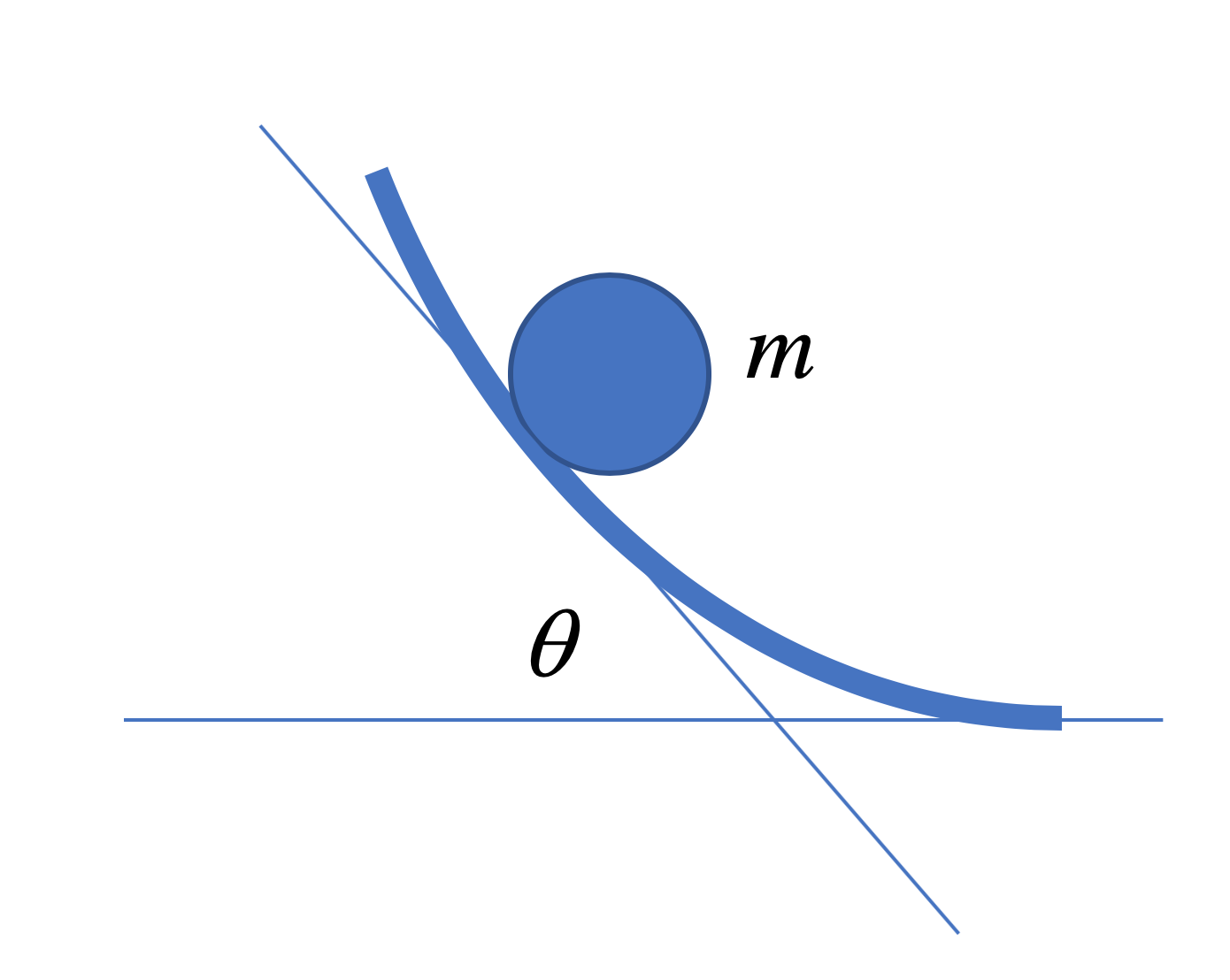Rolling Down the Slope I
A ball of mass is rolling down a curved slope without slipping as shown in the diagram. The coefficient of static friction is . Assume the acceleration due to gravity is .

What can you say about the magnitude of the normal force acting on the ball?
hint: As indicated on the diagram, at any point on the slope, there's an equivalent incline with the same slope that makes an angle of with the horizontal.
This section requires Javascript.
You are seeing this because something didn't load right. We suggest you, (a) try
refreshing the page, (b) enabling javascript if it is disabled on your browser and,
finally, (c)
loading the
non-javascript version of this page
. We're sorry about the hassle.
In the diagram, if we drew the normal force acting on the ball and the normal component of the weight acting on the slope, we would get
N − m g cos θ = m a ⊥
Here a ⊥ is the acceleration in the normal direction. Without going in to the calculus details, we notice that the slope is negative but increasing (becoming more positive), meaning the tangent vector is turning left (or rotating counterclockwise). This is only possible if a ⊥ is positive. Thus, N > m g cos θ .